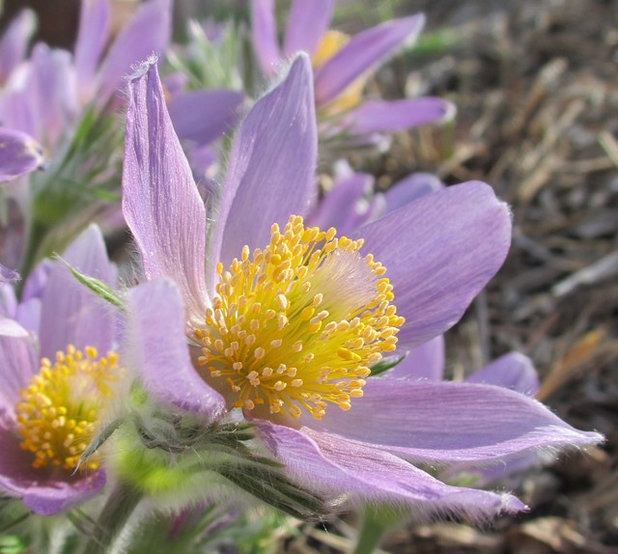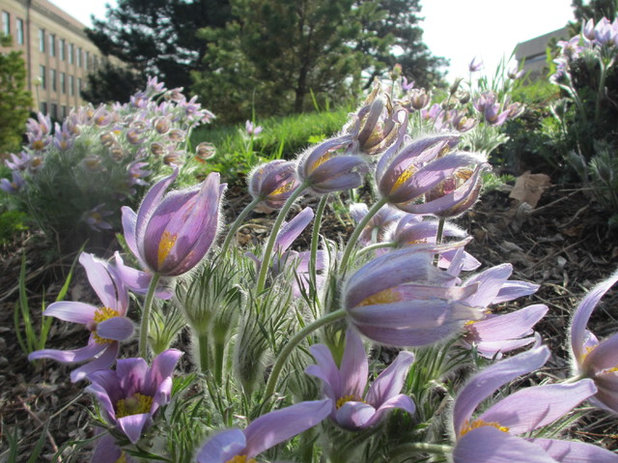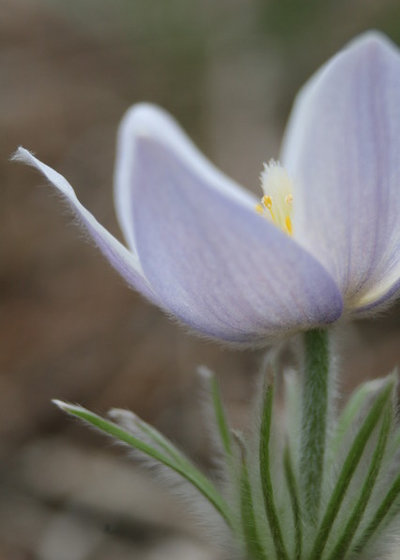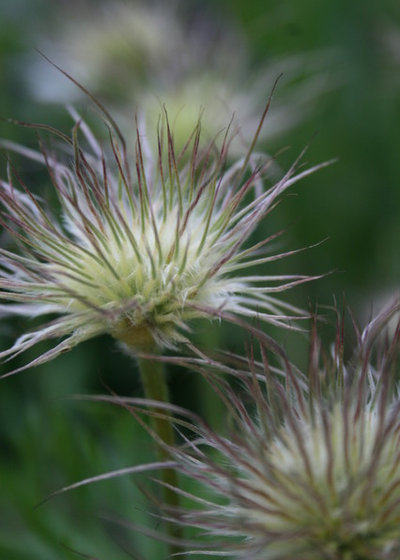Folks are always lamenting that they have few flowers both late in the growing season and early. Well, I can solve the latter with pasque flower (
Pulsatilla patens), a clumping, slowly expanding native flower that’s ahead of the game every April.

Benjamin Vogt / Monarch Gardens
Botanical name: Pulsatilla patens (syn.
Anemone patens)
Common name: Pasque flower
Origin: Native to the central and northern U.S. plains from Wisconsin, south to Nebraska and west, all the way up and down the Rocky Mountains
USDA zones: 4 to 9 (find your zone)
Water requirement: Dry to very dry soil
Light requirement: Full sun to 50 percent shade
Mature size: Slowly spreading clump to about 1 foot wide and tall
Benefits: Early bloomer, offers insect nectar and pollen for early risers
Seasonal interest: Good two-week bloom period in spring, then puffy seed heads for added show
When to plant: Spring to fall

Benjamin Vogt / Monarch Gardens
Distinguishing traits. Pasque flower takes several years to look this full, but it will. The flowers bloom for two weeks, but since new ones are always coming up, you might see flowers for a month. The common name is in reference to Easter, when these plants are in full glory (provided Easter isn't in March, especially the farther north you go, where bloom time is late April).

Benjamin Vogt / Monarch Gardens
How to use it. Hairs cover the short stems, leaves and even petals, providing an insulating layer of warm air for cold spring nights (just like how the hair on our arms works). Place this little fellow anywhere, because it can take anything: in masses, at the front of a border, even as a lawn substitute. It even prefers dry, alkaline clay.

Benjamin Vogt / Monarch Gardens
Planting notes. Many insects visit this early flower on warm days, when they are awakened by the changing weather. The show doesn't stop with blooms — pasque flower's lovely seed head puffs up like a troll doll's head for a week or two, so place it where you can get up close and see the action. This is a great plant for kids, because of the way it feels while in bloom and after.





